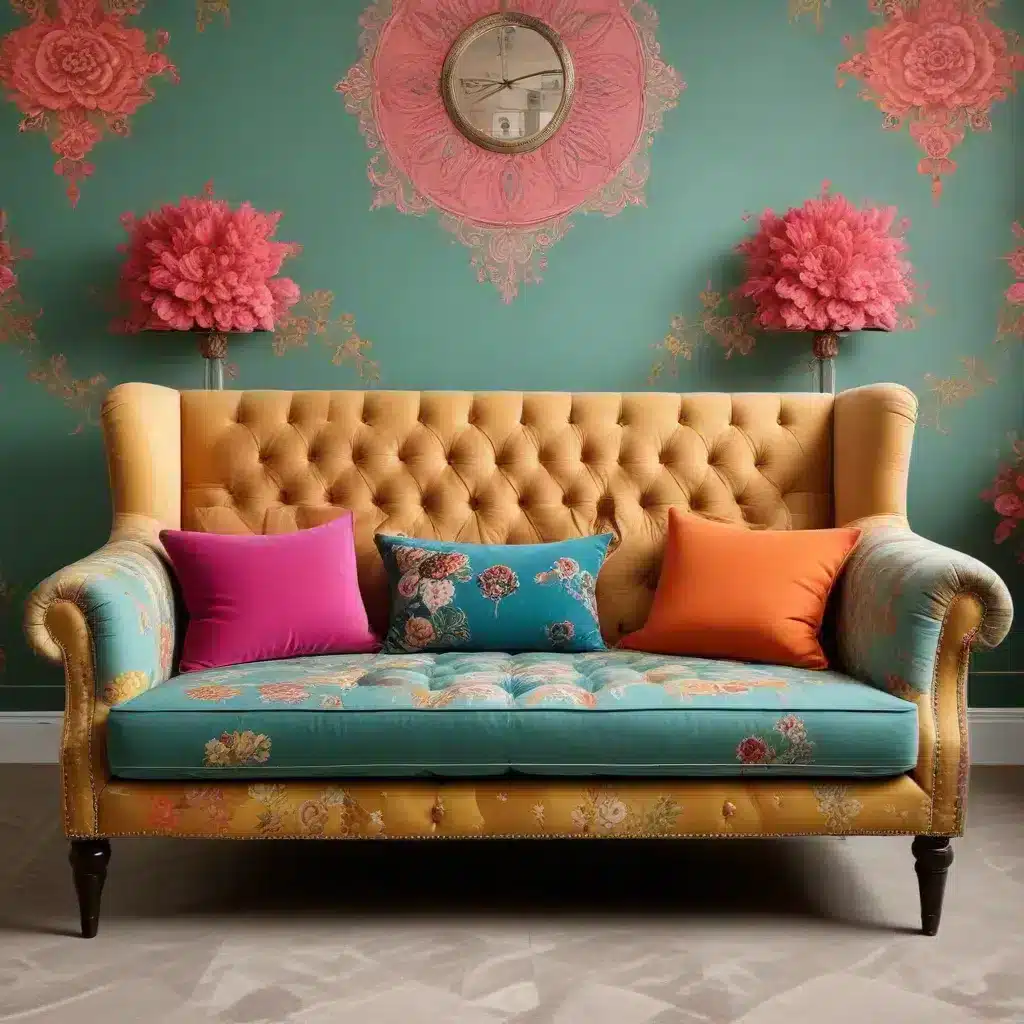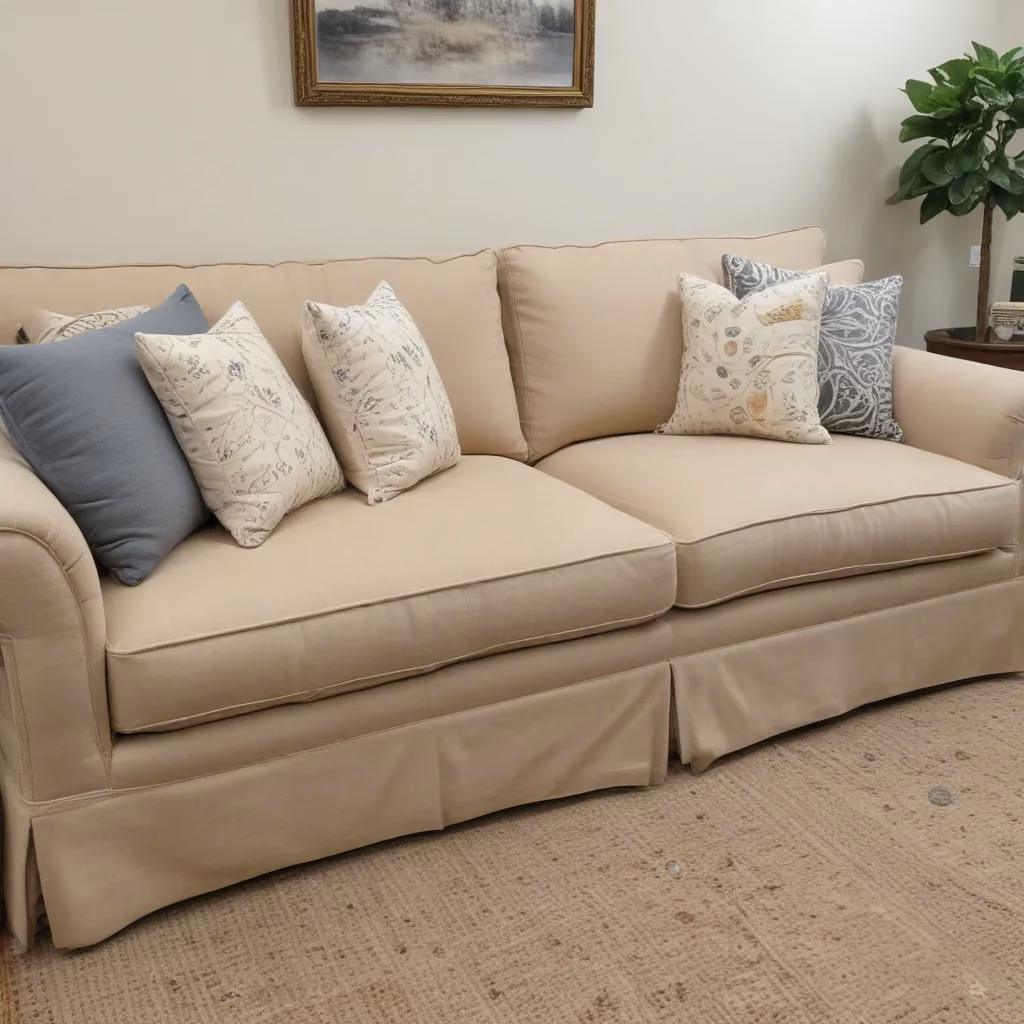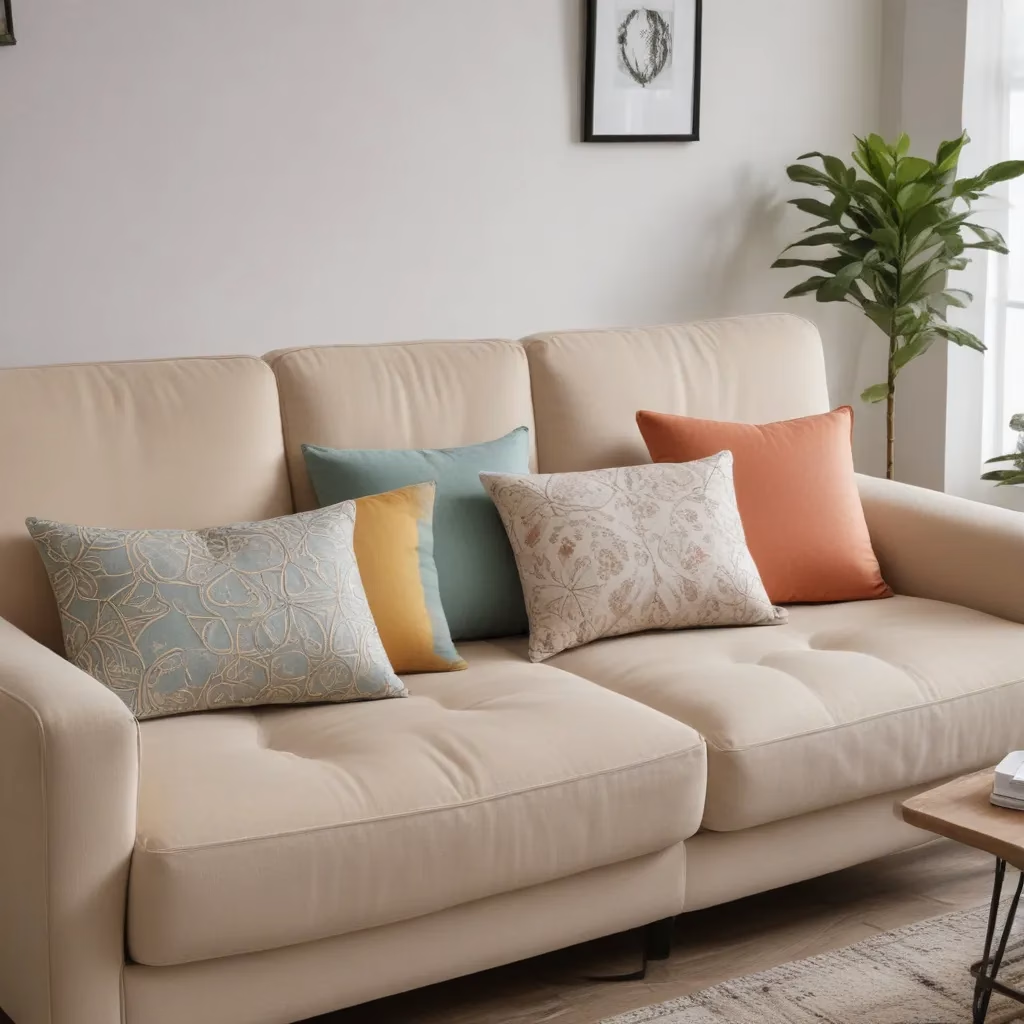
The Art of Unconventional Color Pairings
As a furniture specialist, I’ve seen countless trends come and go, but one that never fails to excite me is the bold use of color in sofas and living spaces. Gone are the days when beige and neutral tones dominated our living rooms. Today, we’re witnessing a renaissance of vibrant hues and unexpected color combinations that breathe life into our homes.
Have you ever walked into a room and felt an instant mood lift because of the colors surrounding you? That’s the power of a well-chosen palette. But here’s where it gets interesting: the most impactful interiors often feature color pairings that, at first glance, might seem outlandish or even clash. Yet, when executed with finesse, these quirky combinations create a sense of eccentric chic that’s both refreshing and deeply personal.
Consider the pairing of a deep aubergine sofa with mustard yellow throw pillows. On paper, it sounds like a recipe for visual chaos. In reality, it can be a stunning centerpiece that anchors a room and sparks conversation. The key lies in understanding color theory and having the confidence to break the rules judiciously.
Unexpected Duos That Dazzle
Let’s explore some color combinations that might raise eyebrows but can create magical spaces when used thoughtfully:
-
Teal and Coral: A teal sofa set against coral walls creates a tropical vibe that’s both sophisticated and playful.
-
Lavender and Olive Green: This pairing brings together the soothing qualities of purple with the earthiness of green, resulting in a balanced and unique look.
-
Navy and Burnt Orange: For a bold statement, try a navy sofa with burnt orange accents. It’s a combination that exudes confidence and warmth.
These pairings might seem daring, but they offer a freshness that traditional color schemes often lack. The trick is to use one color as the dominant hue and the other as an accent. This approach ensures the room feels cohesive rather than chaotic.
Balancing Act: How to Make Bold Colors Work
Incorporating vibrant colors into your living space doesn’t mean abandoning all sense of harmony. Here are some tips to help you strike the right balance:
-
Use neutrals as a grounding element: Introduce white, gray, or beige elements to give the eye a place to rest.
-
Consider texture: Vary the textures of your colored elements to add depth and interest. A velvet sofa in a bold hue can be complemented by throw pillows in contrasting textures.
-
Play with patterns: Incorporate patterns that feature your chosen colors to tie the look together. A patterned rug or curtains can do wonders in unifying a space.
-
Mind the lighting: Natural and artificial lighting can significantly affect how colors appear. Always test your color combinations under different lighting conditions.
Remember, the goal is to create a space that reflects your personality and brings you joy. Don’t be afraid to experiment and trust your instincts.
The Psychology Behind Color Choices
Did you know that colors can profoundly affect our mood and behavior? As a furniture specialist, I’ve observed how different hues can transform not just the look of a room, but also how people feel and interact within that space.
For instance, blue tones are known to promote calmness and productivity. A navy sofa might be the perfect choice for a home office or study area. On the other hand, warm colors like red and orange can stimulate conversation and appetite, making them excellent choices for dining rooms or social spaces.
When selecting colors for your sofa and living area, consider not just the aesthetic appeal but also the emotional response you want to evoke. Are you looking to create a serene retreat or an energetic gathering spot? Your color choices can help achieve these goals.
Maintenance Matters: Caring for Colorful Upholstery
Opting for a vibrantly colored sofa is exciting, but it also comes with maintenance considerations. Here are some tips to keep your colorful upholstery looking fresh:
-
Regular vacuuming: Use a soft brush attachment to remove dust and debris without damaging the fabric.
-
Immediate stain treatment: Address spills promptly to prevent staining. Always blot, never rub.
-
Professional cleaning: Schedule professional cleaning at least once a year to maintain the vibrancy of your sofa’s color.
-
Sunlight protection: Direct sunlight can fade even the boldest colors over time. Consider using window treatments to protect your furniture.
By taking proper care of your colorful sofa, you ensure that it remains a stunning focal point in your room for years to come.
Trends vs. Timelessness: Finding Your Color Story
While it’s exciting to embrace current color trends, it’s equally important to choose hues that resonate with you on a personal level. After all, your living space should be a reflection of your unique style and preferences.
Consider creating a color story that evolves with you over time. Start with a base color that you love and build around it. This approach allows you to refresh your space periodically without having to overhaul your entire color scheme.
For example, if you adore deep green, you might invest in a forest green sofa as your anchor piece. Over time, you can experiment with different accent colors – perhaps gold one season, blush pink the next – to keep your space feeling fresh and current.
The Role of Texture in Color Play
Texture plays a crucial role in how we perceive color in a space. A velvet sofa in a rich jewel tone will reflect light differently than a linen sofa in the same hue. This interplay of texture and color can add depth and interest to your living area.
Consider mixing textures within your color palette to create a more dynamic and inviting space. A smooth leather armchair can complement a nubby wool sofa, even if they’re in contrasting colors. The key is to create a balance that feels intentional and harmonious.
Accessories: The Final Touch
Accessories are the perfect way to introduce quirky color combinations without committing to large, colorful furniture pieces. If you’re hesitant about a bold sofa color, start small with throw pillows, blankets, or artwork that incorporate your desired hues.
These smaller elements allow you to experiment with color pairings and adjust your scheme easily. They’re also a great way to introduce seasonal changes to your decor without breaking the bank.
The Impact of Color on Space Perception
Color doesn’t just affect our mood; it can also alter our perception of space. Lighter colors tend to make a room feel more spacious, while darker hues can create a cozy, intimate atmosphere. This knowledge can be particularly useful when selecting colors for smaller living areas or rooms with limited natural light.
For instance, a small living room might benefit from a light-colored sofa to create an illusion of more space. However, don’t shy away from dark colors entirely – a deep-hued accent wall or large artwork can add depth and character to the room.
Customization: The Ultimate Expression of Personal Style
One of the most exciting developments in furniture design is the increasing availability of customization options. Many manufacturers now offer made-to-order sofas, allowing you to select not just the style but also the exact fabric and color you desire.
This level of customization empowers you to create truly unique pieces that perfectly match your vision. Whether you’re dreaming of a canary yellow chesterfield or a color-blocked sectional, the possibilities are endless.
Sustainability in Colorful Choices
As we embrace bold colors and quirky combinations, it’s important to consider the environmental impact of our choices. Look for furniture makers who use eco-friendly dyes and sustainable fabrics. Many companies now offer upholstery options made from recycled materials or natural fibers that are both beautiful and kind to the planet.
Additionally, investing in high-quality, well-made furniture in colors you truly love means you’re less likely to replace items frequently, reducing waste and your carbon footprint.
Blending Styles with Color
Color can be a powerful tool in blending different design styles within a single space. For example, a mid-century modern sofa in a contemporary color can bridge the gap between vintage and modern aesthetics. Similarly, a traditional Chesterfield upholstered in an unexpected hue can feel fresh and current while maintaining its classic charm.
Don’t be afraid to mix and match different styles – the right color choices can help create a cohesive look that’s uniquely yours.
The Future of Color in Furniture Design
As we look to the future, it’s clear that color will continue to play a pivotal role in furniture design and interior decor. Advances in technology are opening up new possibilities for color application and customization. From color-changing fabrics to digitally printed upholstery, the future of colorful furniture is bright and exciting.
Stay open to new ideas and technologies, but always choose colors and combinations that speak to you personally. After all, your home should be a reflection of your unique style and personality.
Conclusion: Your Home, Your Canvas
Embracing quirky color combinations for eccentric chic is more than just a design choice – it’s a form of self-expression. Your living space is your canvas, and color is your medium. Don’t be afraid to experiment, to mix unexpected hues, and to create a space that truly reflects who you are.
Remember, there are no hard and fast rules when it comes to color in interior design. Trust your instincts, have fun with the process, and create a living space that brings you joy every time you walk through the door.
For more inspiration and expert advice on creating your perfect living space, visit Sofa Spectacular. We’re here to help you turn your colorful dreams into reality.



